Simplifying Medication Adherence with Thoughtful Design
By Stephanie Hlywak
February 23, 2024
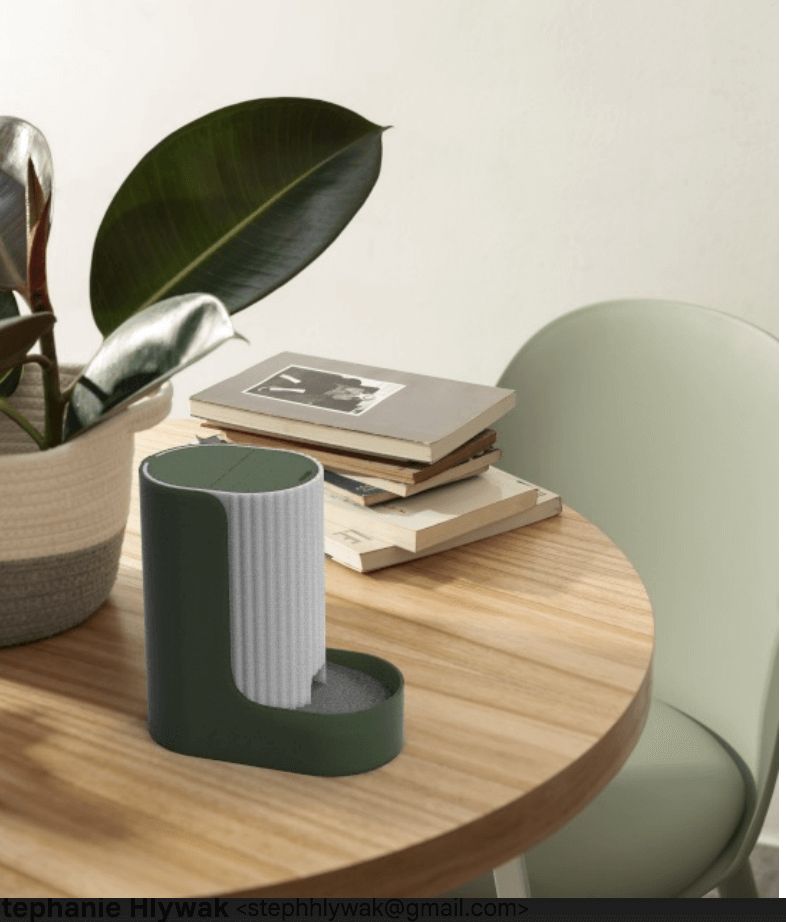
About a decade ago, Express Scripts ran a multi-year pilot study to determine the main cause of medication non-adherence. In its study of 600,000 patients, 39 percent forgot to take their meds, 20 percent did not renew scripts on time, and 10 percent put off getting refills, resulting in multiple missed doses. Among seniors—who are prescribed the most medications—the forgetfulness rate is much higher.
The consequences of forgetting to take medication are significant. According to researchers at the Mayo Clinic, it can lead to up to 50 percent of treatment failures, around 125,000 deaths, and up to 25 percent of hospitalizations each year.
Solutions to improve medication adherence are necessary and life-saving. From day-of-the-week pill boxes to alarms and other interventions, patients have been creative—and yet still unsuccessful—about remembering to take their medications.
PillPal, A User-Friendly Medication Management System
ID students addressed that question by designing PillPal, a user-friendly medication management system that transforms a daunting task into an intuitive experience, providing users with an unmissable medication reminder. With its reliability and convenience, PillPal ensures users never miss a crucial dose, involves the entire care team in the work to increase medication adherence, and increases peace of mind for patients, their families, and their doctors.
The PillPal system contains three elements: the physical dispenser device, the healthcare provider dashboard, and the patient app.
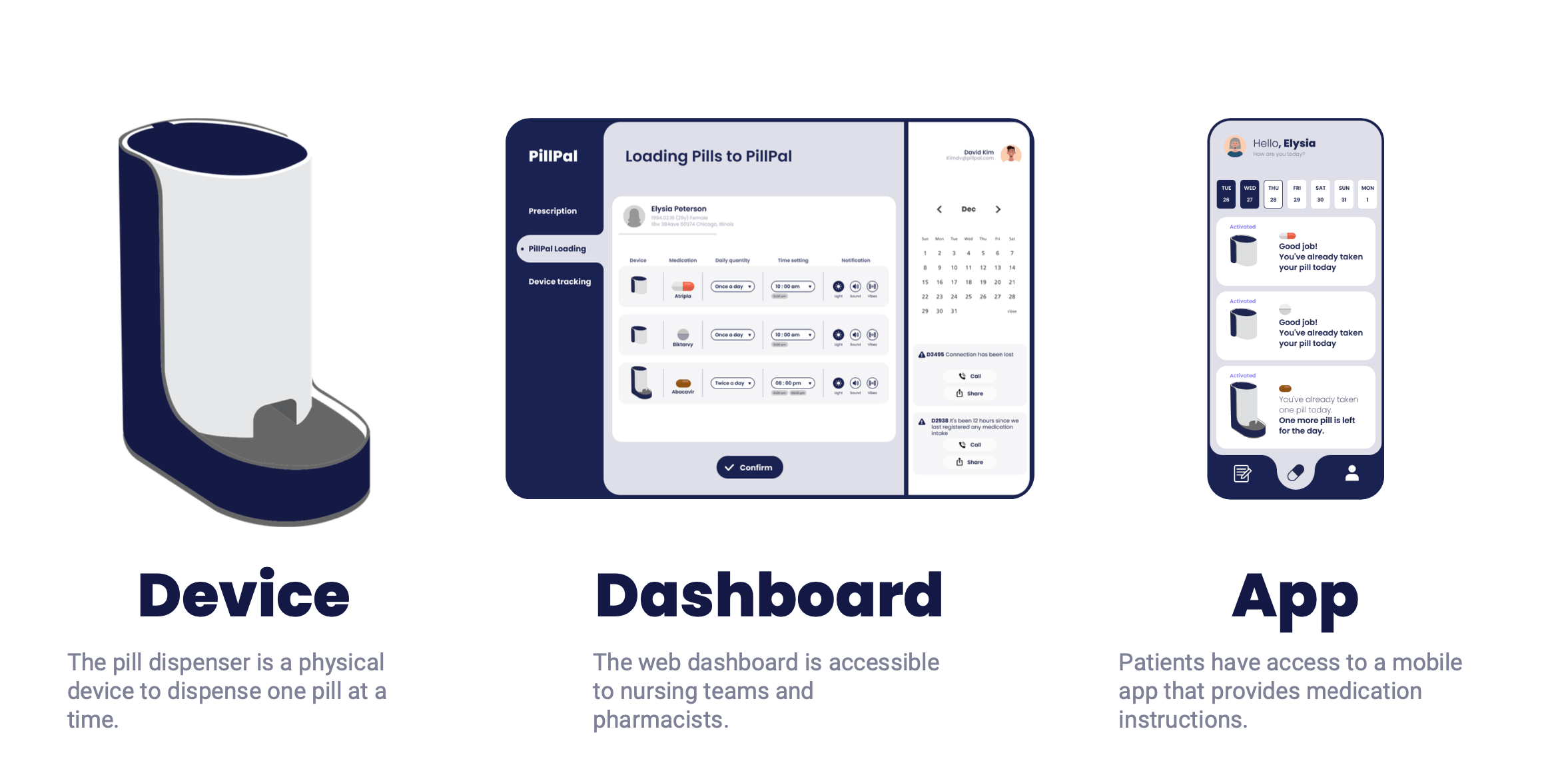
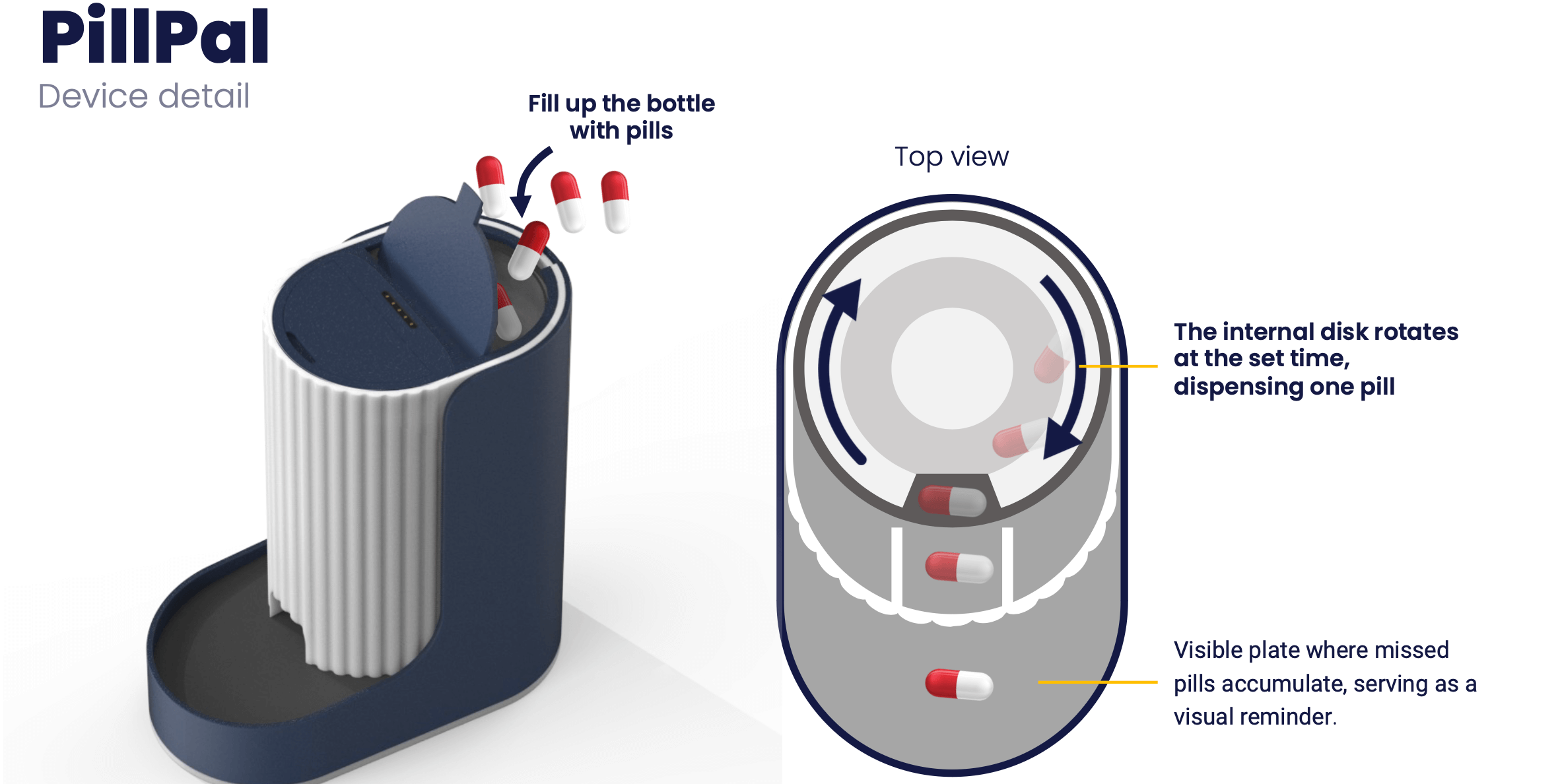
The Physical Dispenser Device
The device itself is sleek and attractive. It uses an internal disk that rotates at a set time each day, dispensing one pill onto a visible plate where missed pills accumulate—serving as a visual reminder. If a patient takes multiple medications, these pills can be dispensed through the same unit at different times simply by stacking the dispensers atop each other.

The Healthcare Provider Dashboard
The web dashboard is accessible to nursing teams and pharmacists and displays selected prescription medication history chosen by the patient and records for the medications administered by PillPal.
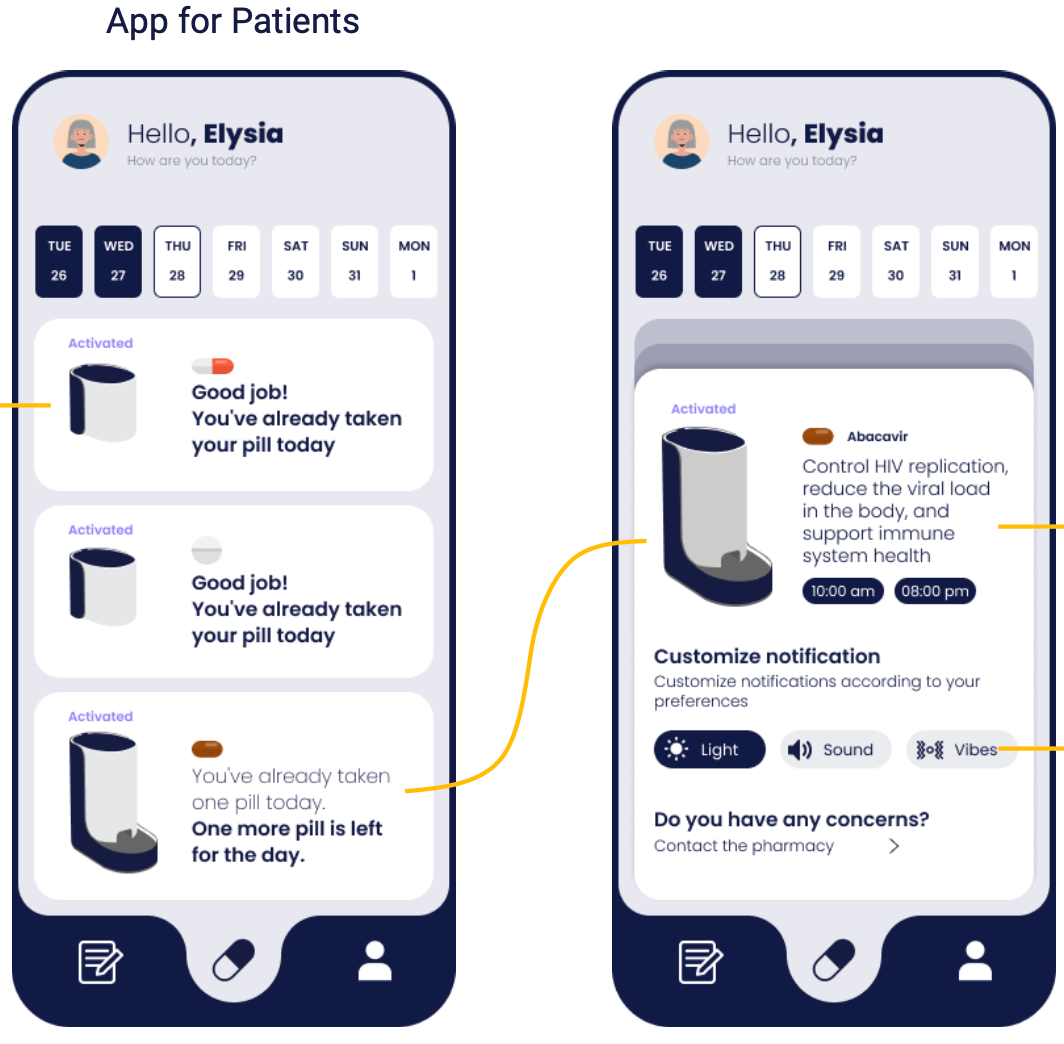
The Patient App
The patient app informs users about the status of medication intake and allows them to view the history of medication usage to ensure proper adherence. While patients do not have control over the dispensing time to ensure adherence to the prescribed schedule, patients can customize notifications based on their preferences.
Circumventing Patient Forgetfulness
Most commercially available pill dispensers put the burden on properly filling and programming it on the user. With PillPal, patients aren’t the only beneficiaries of the system:
- Nurses also have a centralized dashboard for managing and monitoring multiple patients.
- Pharmacists can use the web dashboard to input prescription information and pill instructions. The pharmacist dispenses the medication and puts it in a container that plugs into the patient’s device at home so that it will be dispensed at set times.
- Inpatient and Outpatient Care Teams have total clarity on the patient’s medication history and usage.
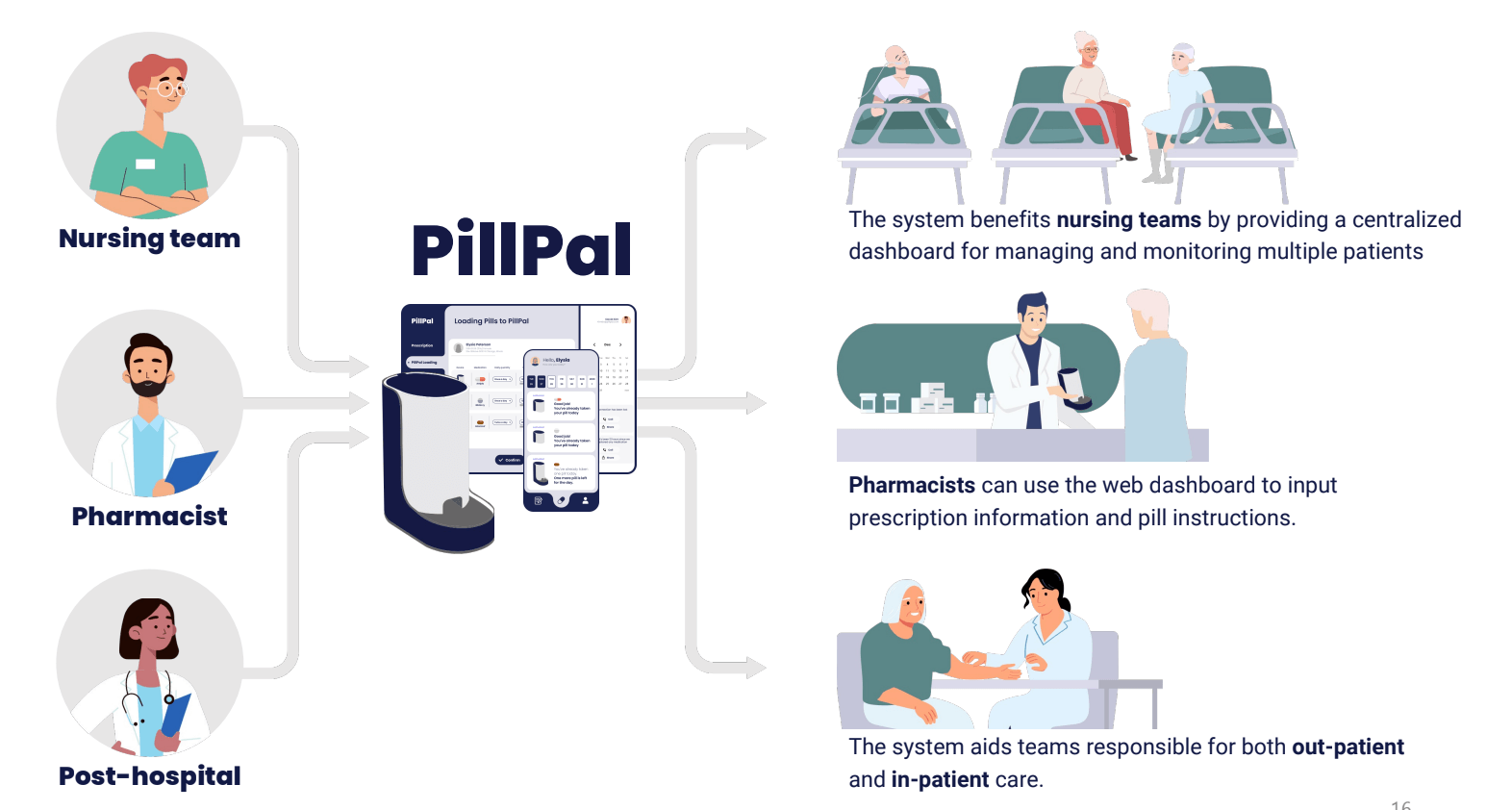
PillPal supports medication adherence throughout the process of healing.
It’s this 360-degree care support model that proves to be most transformative. PillPal emphasizes collaboration and system change, ultimately creating a holistic and personalized approach to medication management. This collaborative approach ensures patients receive personalized support. In case of device issues, they can easily contact their pharmacist.
Bringing Design Ingenuity to Serious Health Challenges
In all, the PillPal system is designed to ease the burden of managing chronic illnesses, especially for aging individuals with significant medication histories. The system benefits users, caregivers, and healthcare professionals alike. Patients can easily access medication instructions via a user-friendly app, empowering them to take more control of their health. A centralized dashboard streamlines monitoring and intervention for caregivers and professionals, improving care quality. Most of all, PillPal integrates into users’ daily lives, preventing medication non-adherence and alleviating stress associated with health management.
The impact of this product would be significant, given the scale of the problem it is trying to solve. The scalability of the system, the students say, lies in its adaptability to diverse healthcare settings, accommodating various patient needs and medication regimens. The involvement of pharmacists in the medication management process can have cascading effects on the entire healthcare system: by leveraging technology to enhance patient-pharmacist collaboration, the project fosters a more responsive and patient-centric healthcare environment. This collaborative model has the potential to serve as a blueprint for other healthcare interventions, emphasizing the importance of involving healthcare professionals in the day-to-day management of chronic conditions.
As the system scales, the data collected from patient interactions can contribute valuable insights into medication adherence patterns and potential areas for improvement. This data-driven approach allows for continuous refinement of the system, ensuring its effectiveness and relevance in diverse healthcare settings. Furthermore, the project’s emphasis on system change, where the pharmacist plays a proactive role in ensuring medication adherence, has broader implications for healthcare policy. It highlights the importance of recognizing pharmacists as key contributors to patient care and encourages the integration of similar collaborative models into mainstream healthcare practices. The scalable and collaborative nature of this system positions it as a transformative force in improving health outcomes and patient experiences on a broader scale.